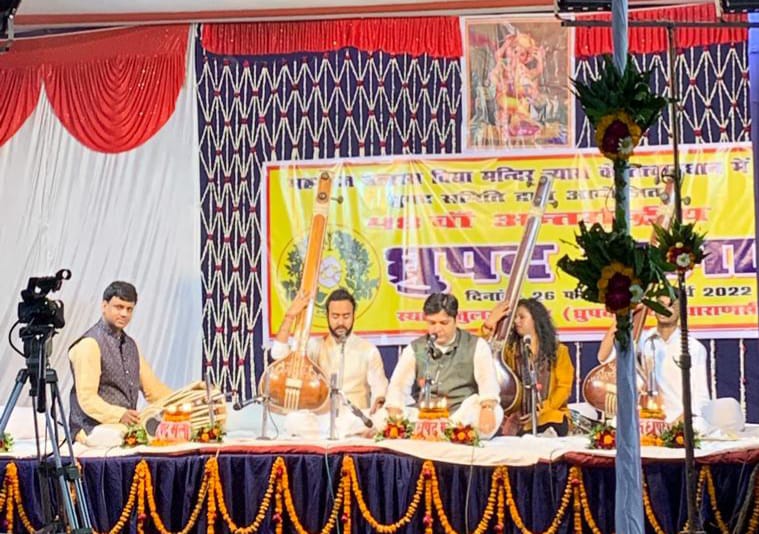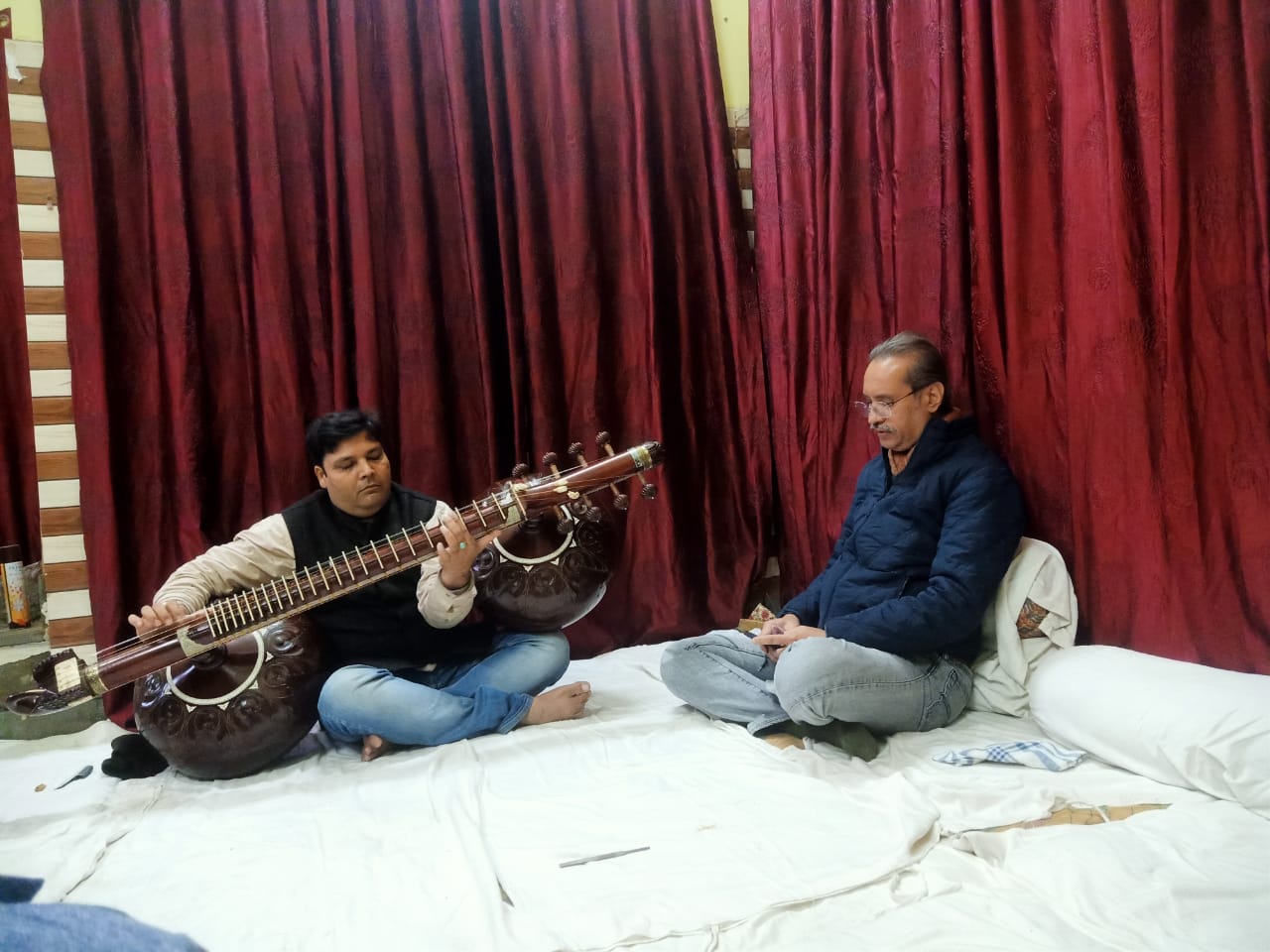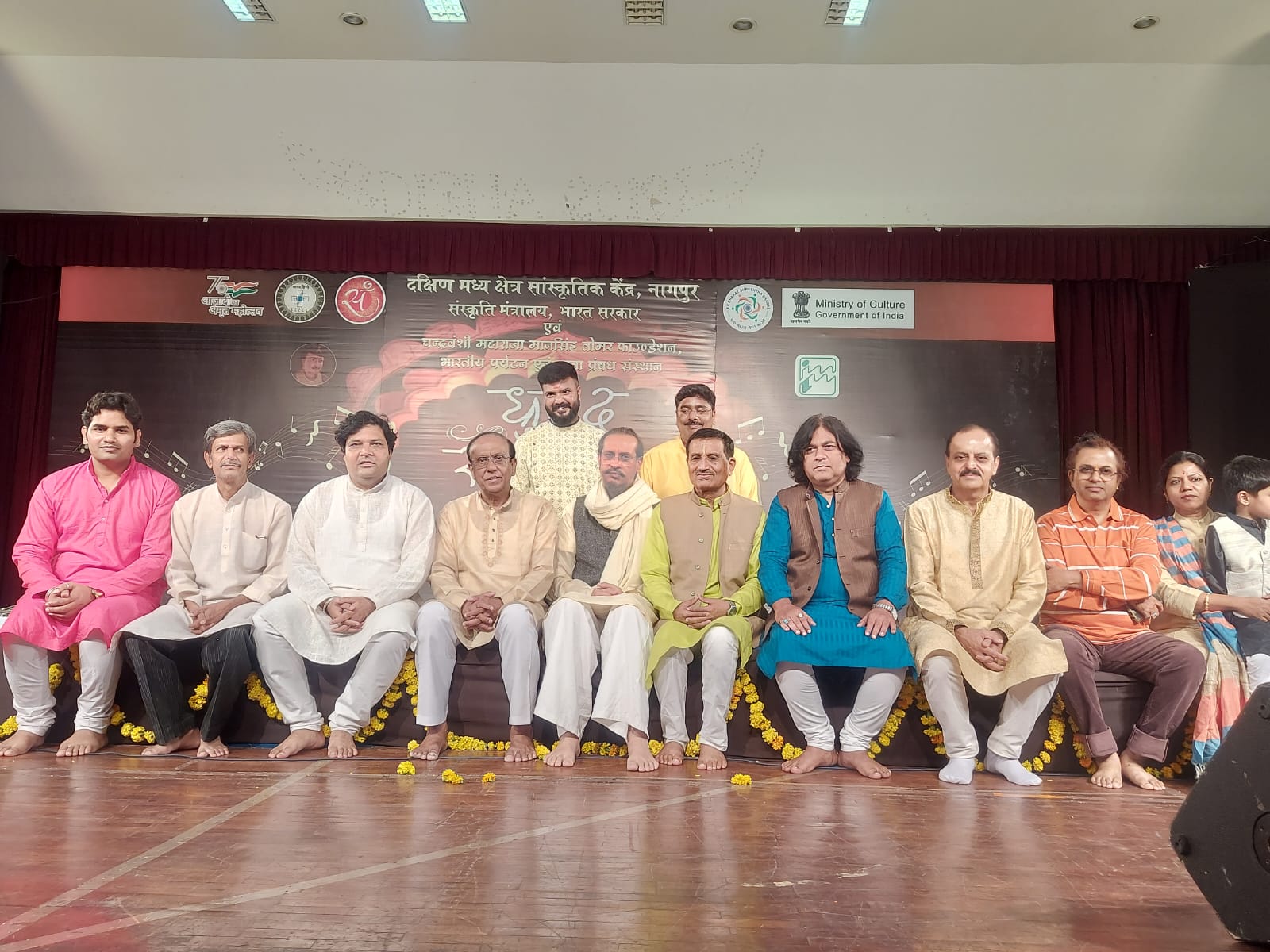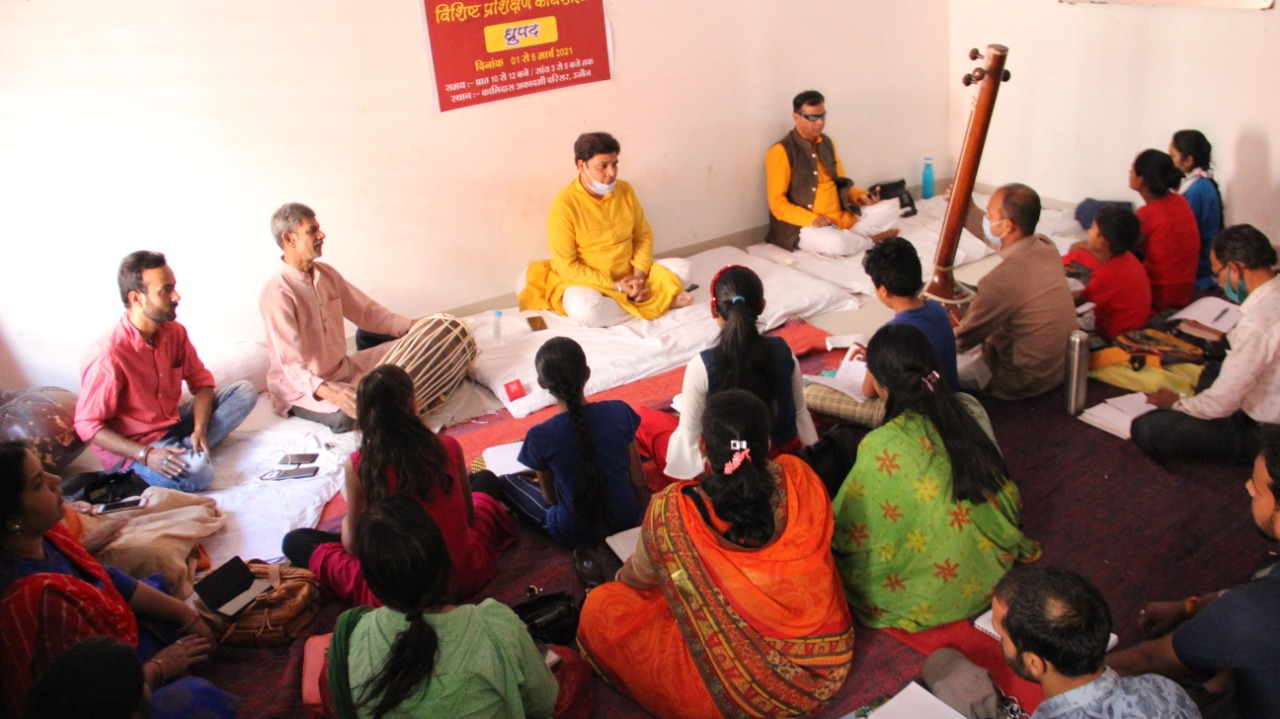Welcome
Dhruv denotes Pole Star and Pada denotes verse, signifying unforgotten and resilient verse. The origin of Dhrupad is believed to be from Sama Vedas. That is the reason it is also known as Samagaan. The king of Gwalior Maharaja Mansingh Tomar had beautifully translated Dhrupad from Sanskrit to Brij [ Language] to make it more popular. He also scripted manuscript by the name Maankautuhal which includes numerous Dhrupad composed by him.
Dhrupad consists of four main voices namely – Gauhar, Nauhar, Kandhar and Dagur. Traditionally in Dhrupad after singing spiritual words like Anter Taran Taran Tu Om Hari Namo Narayan in Alap, Madhya laya alap, and drut lay alap. Afterwards bandish is sung in four stages Sthai, Antara, Sanchari and Abhog are sung.
Eternally Gwalior has been rich as far as classical music is concerned. Numerous well known singers like Tansen, Baiju have always made Gwalior proud. They conventionally always sang Dhrupad because Khyal never existed during those days. Hassu Haddu Khan sahib is considered to be the originator of Gwalior Gharana is well established all across the globe. Unfortunately after this period Dhrupad became extinct as one of the styles of singing. Few of the most popular artists like Sarod Player Ustad Amzad Ali Khan, Khyal vocalist Pandit Krishna Rao Pandit, Raja Bhaiya Poochwale ect.
Now Abhijeet is continuing Dhrupad Gurukul in gwalior.






